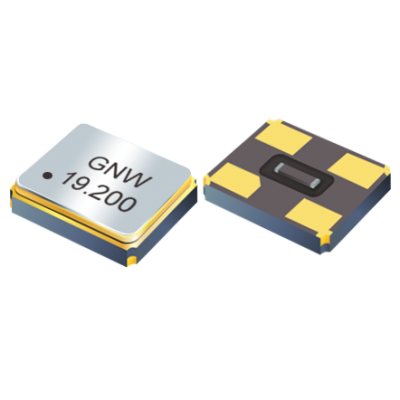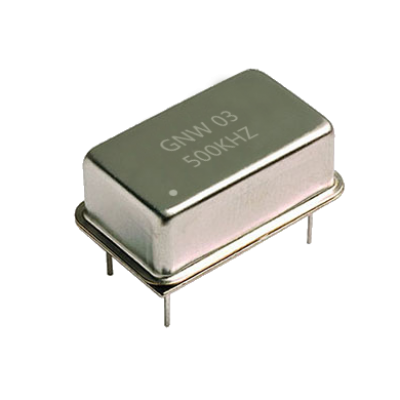关于TCXO温补晶振频率稳定性(Frequency Stability)和频率精度(Frequency Accuracy),晶诺威科技介绍如下:
1. Introduction温补晶振简介
Temperature compensated oscillators (TCXO) are used for frequency reference in systems that typically require frequency stability of ±2ppm or better. The frequency accuracy in these systems must, in general, be maintained within a timing budget that takes into account frequency drift of the TCXO due to all factors including variations in operating temperature, supply voltage, output load, and aging during the entire system operating lifetime. A set of frequency stability parameters is commonly defined by the industry to quantify the influence of environmental factors and circuit conditions on reference oscillators. This document explains the frequency stability specifications in the TCXO datasheets and how the limits of frequency accuracy are calculated.
温度补偿振荡器(TCXO/温补晶振)常用于需要±2ppm 或更佳频率稳定度的系统中的频率参考。在这些系统中,频率准确度通常必须在考虑到 TCXO 因运行温度、电源电压、输出负载和整个系统运行寿命期间的老化等所有因素而导致的频率漂移的时间预算内维持。业界通常定义了一套频率稳定度参数来量化环境因素和电路条件对参考振荡器的影响。本文将详细介绍晶诺威科技 TCXO 温补晶振数据表中的频率稳定度规格,以及如何计算频率准确度的极限。
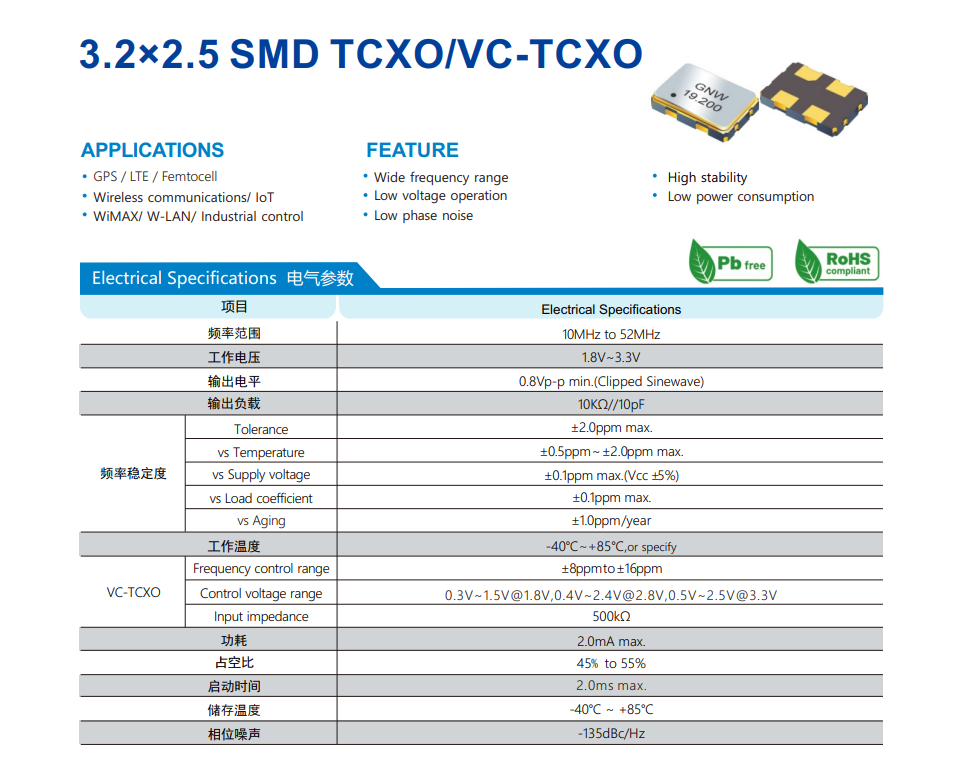
2. Temperature stability and frequency accuracy 温度稳定性和频率精度
Genuway TCXO datasheets includes the following frequency stability specifications 晶诺威科技产TCXO温补晶振数据手册包括以下频率稳定度规格:
Initial tolerance (F_init) is frequency deviation from nominal frequency at room temperature, e.g. 25 ±3℃. It is measured under typical power supply voltage and output load conditions with the device mounted on a printed circuit board (PCB). The main components of the initial tolerance are residual frequency error after temperature calibration at the Genuway factory and frequency shift due to PCB soldering.
初始容差(F_INIT)是室温下与额定频率的频率偏差,例如25±3℃。它是在典型的电源电压和输出负载条件下安装在电路板(PCB)上并用设备进行测量。初始公差主要由晶诺威科技工厂温度校准后的频率误差和由于印刷电路板焊接引起的频率漂移之总和。
The contribution of initial tolerance to the system timing budget can be minimized by using voltage-controlled TCXO (VCTCXO) and frequency calibration after the PCB reflow assembly process.
通过在电路板回流焊接后使用压控TCXO(VCTCXO)和频率校准,可以最大限度地减少初始容差对系统时序预算的影响。
Stability over temperature (F_stab) characterizes the frequency drift caused by ambient temperature change and is specified as one-half of the peak-to-peak frequency deviation over the full operating temperature range.
温度稳定度(F_Stab)表征了环境温度变化引起的频率漂移,它被指定为整个工作温度范围内峰-峰值频率偏差的一半。
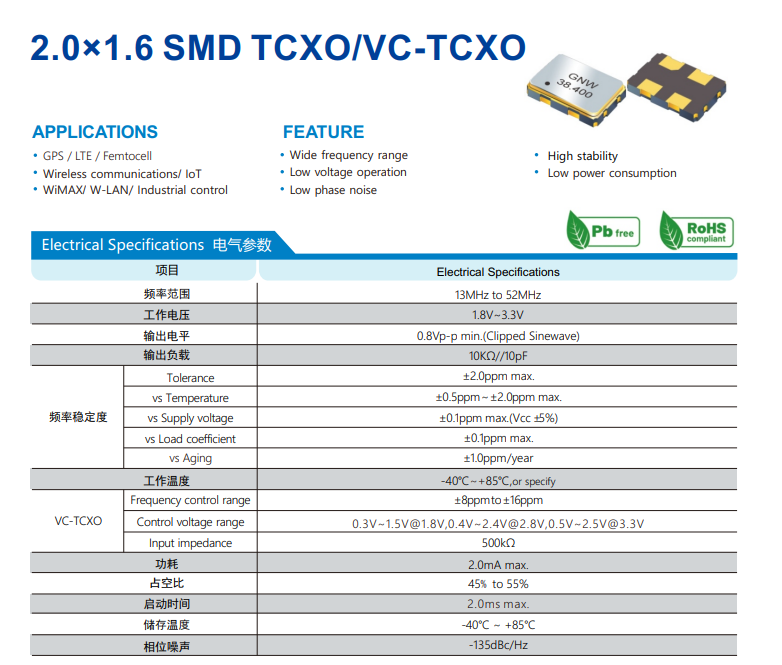
Stability over supply voltage (F_vdd) specifies the frequency shift caused by a power supply voltage change within ±10% for 2.5V to 3.3V VDD or ±5% for 1.8V VDD.
电源电压稳定度(F_VDD)是指电源电压在2.5V至3.3V电压范围内±10%或1.8V电压范围内±5%范围内引起的频率漂移。
Stability over output load (F_load) specifies the frequency shift caused by the difference in loading capacitance on the output pin, up to 15 pF for LVCMOS output oscillators.
输出负载稳定性(F_LOAD)指定由输出引脚上的负载电容差异引起的频移,对于LVCMOS输出振荡器,最高可达15pF。
Overall frequency accuracy (F_total) is calculated as sum of all the above parameters. For example, the overall frequency accuracy of a VCTCXO with ±2.5 ppm temperature stability is: F_total = F_init + F_stab + F_vdd + F_load = 1 + 2.5 + 0.05 + 0.1 = 3.65 ppm.
总频率精度(F_TOTAL)是上述所有参数的总和。例如,温度稳定性为±2.5ppm的VCTCXO的总频率精度为:F_TOTAL=F_INIT+F_STAB+F_VDD+F_LOAD=1+2.5+0.05+0.1=3.65ppm。
Better overall frequency accuracy can be achieved by using the VCTCXO option to reduce initial tolerance by system calibration: F_total = F_stab + F_vdd + F_load = 2.5 + 0.05 + 0.1 = 2.65 ppm.
选择 VCTCXO(压控温补晶振) 通过系统校准可减少初始公差,以此实现更好的整体频率精度:F_total = F_stab +F_vdd +F_load = 2.5+0.05+0.1=2.65 ppm。
Temperature stability is usually the dominate source of frequency error in applications using a TCXO. Unlike frequency offset at room temperature, temperature drift cannot be canceled out by using a simple calibration scheme.
在使用 TCXO 的应用中,温度稳定性通常是频率误差的主要来源。与室温下的频率偏移不同,温度漂移不能通过简单的校准方案来抵消。
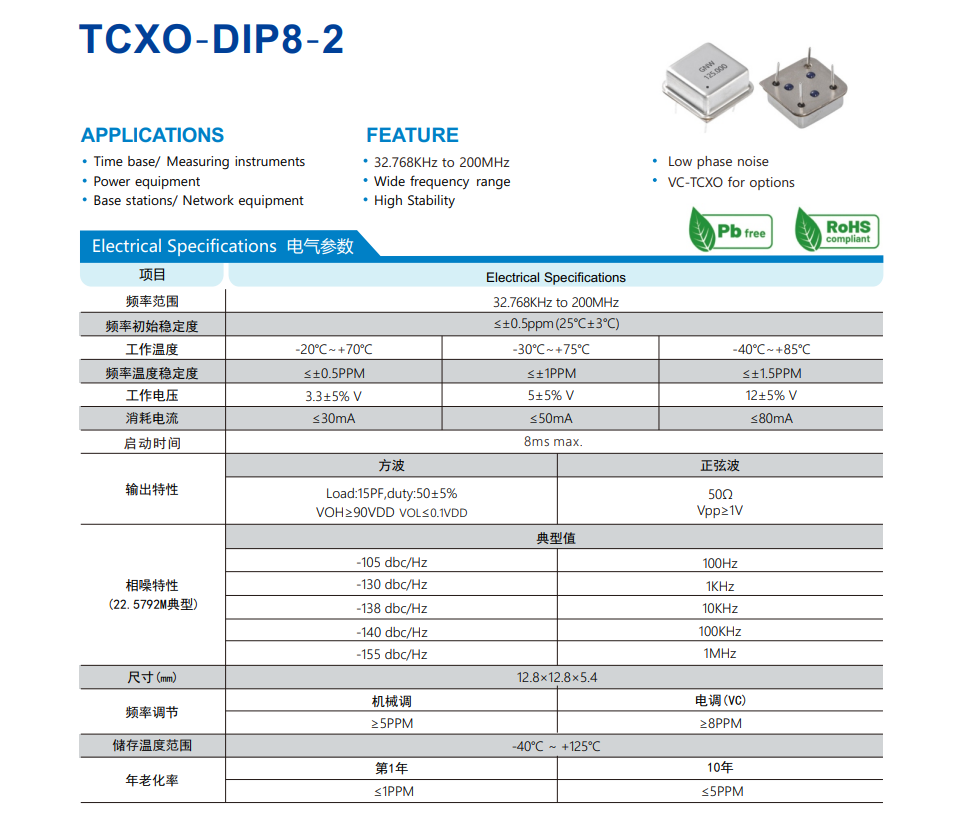
3. Aging and frequency accuracy 老化和频率精度
Even under constant operating conditions, TCXO frequency can shift over time due to internal changes within the device. An additional parameter for frequency shift over time is required in the system budget. The most commonly used parameters are first year aging and 10-year aging.
即使在恒定的工作条件下,TCXO频率也会因器件内部变化而随时间变化。在系统评估中,还需要把老化率加以参考。最常用的参数有一年老化和十年老化。
First year aging specifies the limit of frequency shift, with respect to initial frequency, after one year of continuous operation under constant power supply voltage and operating temperature, typically at 25℃.
第一年老化规定了在恒定电源电压和工作温度(通常为25℃)下连续运行一年后,相对于初始频率的频移极限。
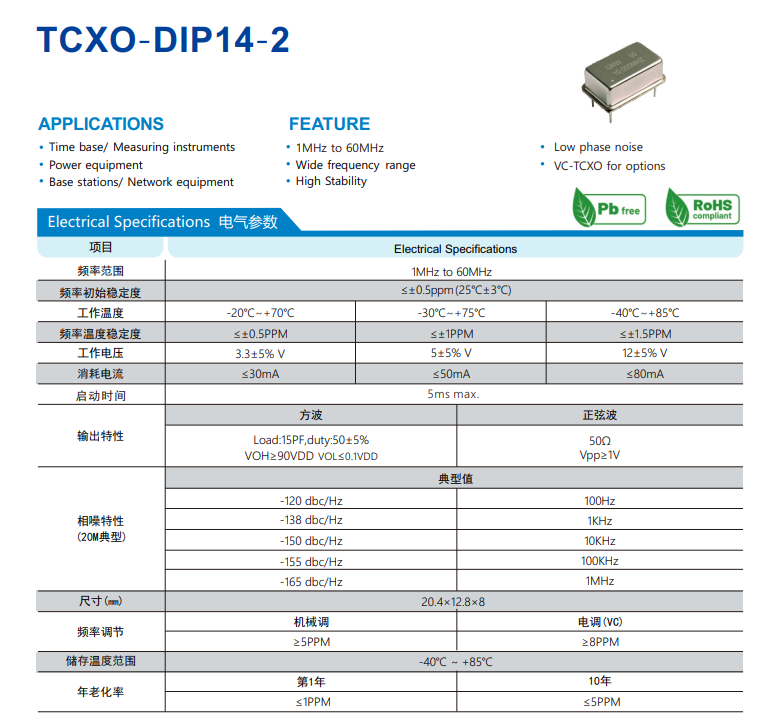
10-year aging specifies the limit of frequency shift, with respect to initial frequency, after 10 years of continuous operation at constant operating conditions. 10-year aging specifications are extrapolated numbers from frequency measurements performed on a statistically significant set of samples over 9 to 18 months or even longer period of time.
10年老化规定了在恒定运行条件下连续运行10年后,相对于初始频率的频移极限。10年老化规格是根据在9至18个月甚至更长时间段内对一组具有统计意义的样本进行的频率测量而推断的数字。
To calculate overall frequency accuracy including 1-year or 10-year aging: F_total = F_init + F_stab + F_vdd + F_load + F_aging. For example, the first year aging of a 2.5 ppm VCTCXO is 1.5 ppm. The overall frequency accuracy can then be calculated as: F_total = F_init + F_stab + F_vdd + F_load _ F_aging = 1 + 2.5 + 0.05 + 0.1 + 1.5 = 5.15 ppm. The 10-year aging for the same VCTCXO is 3.5 ppm, which results in an overall frequency accuracy of 7.15 ppm over ten years.
要计算包括1年或10年老化的总体频率精度:F_TOTAL=F_INIT+F_STAB+F_VDD+F_LOAD+F_AGE。例如,2.5ppm的VCTCXO的第一年老化为1.5ppm。然后,总频率精度可以计算为:F_TOTAL=F_INIT+F_STAB+F_VDD+F_LOAD_F_AGE=1+2.5+0.05+0.1+1.5=5.15 ppm。同样的VCTCXO的10年老化是3.5ppm,这导致在10年内总的频率精度为7.15ppm。
Using the same voltage tuning option for TCXO devices and system calibration can enable tighter limits in the frequency accuracy budget. For example, removing initial tolerance after PCB assembly and correcting aging related frequency shift periodically over the product lifetime will increases accuracy.
对TCXO器件和系统校准使用相同的电压调谐选项可以在频率精度预算中实现更严格的限制。例如,在电路板组装后消除初始公差,并在产品生命周期内定期校正与老化相关的频移将提高精度。
What is a voltage controlled temperature compensated crystal oscillator?
Temperature Compensated Crystal Oscillators (TCXOs) deliver excellent temperature characteristics combined with low power consumption and fast warmup. Voltage Controlled Temperature Compensated Crystal Oscillators (VC-TCXOs) combine the same excellent temperature characteristics, low power consumption and fast warmup with a voltage control function to allow precise tuning of the output frequency after PCB assembly.
Voltage control can also be used during operational life, to compensate for any effects of aging as well as offering the ability to pull back to nominal frequency where there is a change of circuit conditions. TCXOs and VC-TCXOs are used where the stability of a standard Crystal Clock Oscillator is insufficient.



